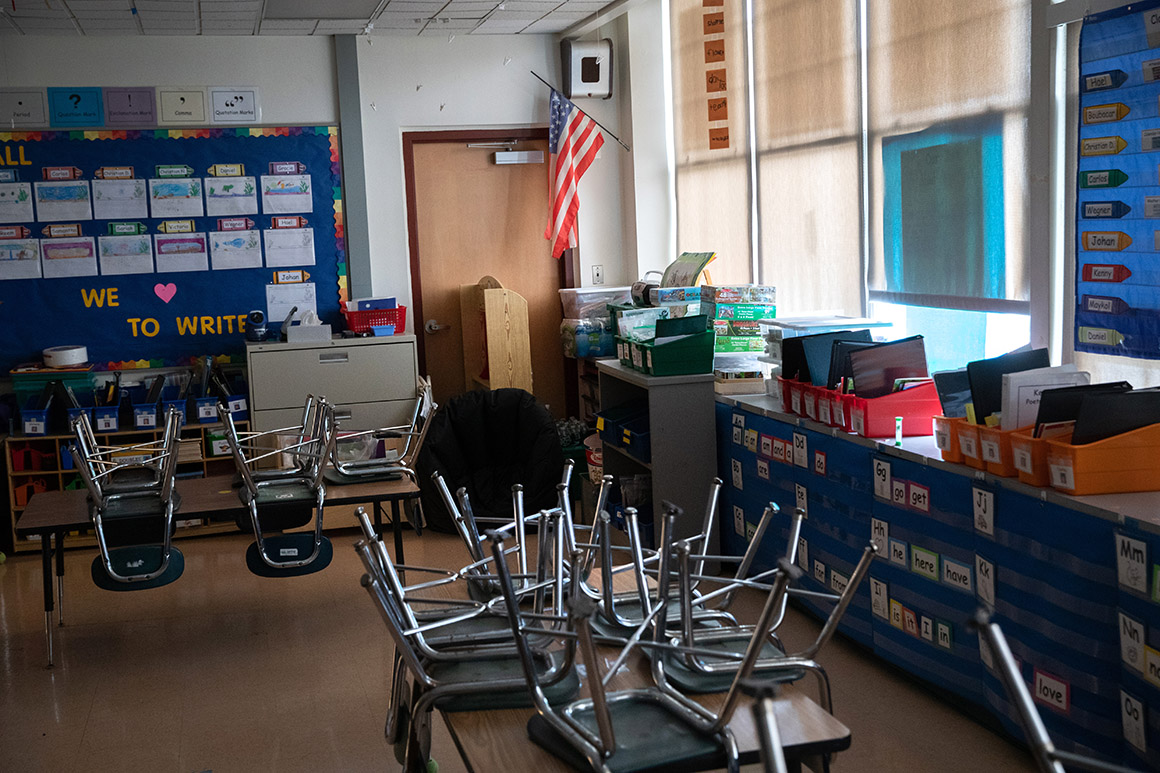A group of governors and state education officials are pressing
schools to lengthen their days, boost summertime instruction and
upgrade tutoring in the coming months to help offset the
pandemic’s toll on learning.
Virginia Gov. Ralph Northam suggested year-round schooling for
his state earlier this month. Arizona Gov. Doug Ducey dedicated
part of his Jan. 11 “State of the State” address to call for
longer school days and one-on-one tutoring. In Alabama, some school
districts may add 20 days to the 2021-22 school year, bulk up
summer and after-school programs, and possibly launch Saturday
classes for select middle and high schoolers.
Educators and state policymakers say recovering from a year of
disrupted class time will be costly and time-consuming, and local
governments may not be able to fully finance ambitious recovery
plans themselves. Though schools have already received billions in
federal dollars over the course of the past year to cover Covid
costs, advocates say more is needed, putting pressure on President
Joe Biden to quickly push his proposed $1.9 trillion stimulus
package through Congress.
A December analysis from
McKinsey & Company concluded American students could lose
on average five to nine months of learning by the end of June.
Analysts concluded that students of color could be six to 12 months
behind by that time, compared with four to eight months of lost
learning for white students.
“Sometimes a storm really hits, and it demolishes buildings
and it takes literally years to rebuild a community or a town.
That’s what we’re in now,” said Eric Mackey, Alabama’s
state superintendent of education.
“This is not the kind of thing where we’re going to come out
of the cellar, pick up a few sticks, and life is going to go back
to normal,” he said. “This is going to take a long time.”
For now, states are turning to a mix of federal and local
funding as they lay out plans to support struggling students.
Tennessee Gov. Bill Lee this week summoned state lawmakers to a
special legislative session meant to address plummeting reading and
math proficiency rates.
Even before the pandemic, the state estimated just one-third of
Tennessee third graders met expectations for reading at their grade
level. Now the state education department is planning
a new literacy program, backed by $100 million in federal
stimulus and grant dollars, to make up the gap.
Lawmakers will also
chew over a trio of bills pushed by Lee and state Education
Commissioner Penny Schwinn that include
a proposal to create after-school and summertime learning camps
for at-risk younger students, build a statewide network of tutors
and launch a pilot testing program to help teachers more frequently
measure student learning.
“When we look at extending the school year and the school day,
this is one version of that,” Schwinn said.
“We have not just an opportunity, but a responsibility to
think five and seven years down the road,” she said. “We have
to think about how we are going to accelerate, understanding that
we have more challenges than ever before.”
In Illinois, state Education Superintendent Carmen Ayala urged
administrators to consider longer school years and summer learning
opportunities with their share of more than $2 billion in stimulus
funding.
“Begin planning now to reimagine the school calendar and
expand the school day to ensure students receive every opportunity
to grow,”
Ayala wrote to school leaders this month.
A bill introduced this month in the Washington state legislature
also eyes federal money as a potential source of funding for a
proposal to extend the school year at
dozens of local school districts.
Recent calculations from the Education Resource Strategies
nonprofit said a broad effort to address seven to eight months of
lost learning time would cost between
$12,000 and $13,500 per student over the course of five years.
That could generate a price tag that swells well past $300 billion
to reach about half the nation’s K-12 students.
“The fear here is that everyone’s thinking, ‘We’ll get
it done this summer, and starting fall of next year, we’re
good,’” said Michael Griffith, a senior researcher and analyst
at the Learning Policy Institute. “When really, it’s greater
lost learning than that. It’s something that, for a lot of kids,
a summer can’t make up.”
Biden’s new stimulus pitch would
send $130 billion to K-12 schools, plus another $5 billion
governors could spend on elementary and high schools — and still
more money for colleges and universities. His plan notes the aid
could help pay for extended learning time, tutoring and counselors,
though the dollars could also be spent on extra staff, technology
or other expenses.
If approved — and that’s far from guaranteed — that money
would bolster roughly $13 billion in aid for K-12 schools that
Congress already set aside in the CARES Act this past spring,
followed by another $54 billion in a second stimulus package
approved before the end of last year.
So, in Alabama, officials are preparing for a long haul.
“I think we have to dig in and understand this is long-term.
This is not something that’s going to be solved by this fall,”
Mackey said. “I think we’ll be dealing with this in
2024.”



















